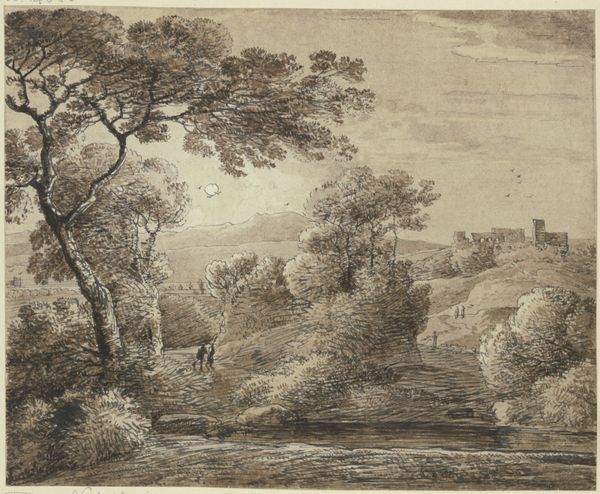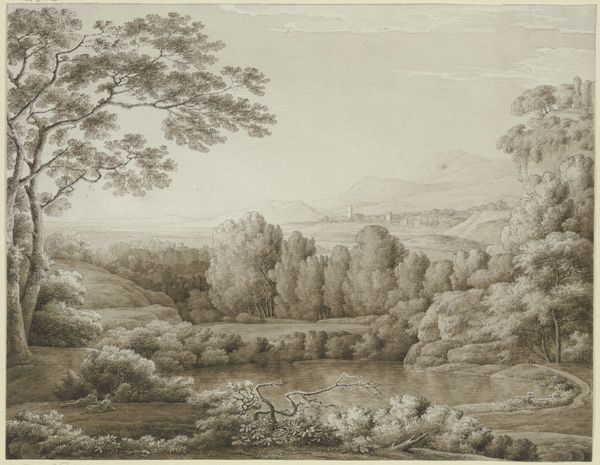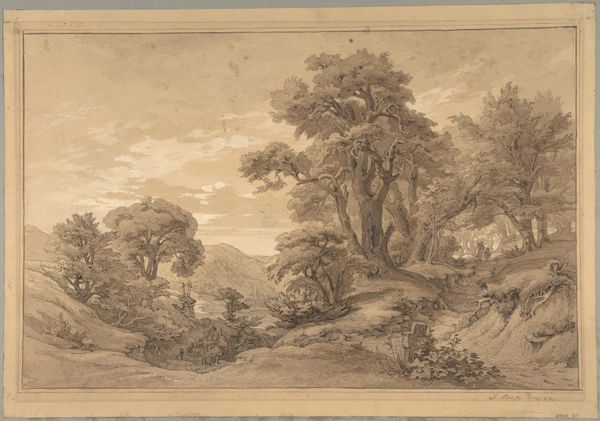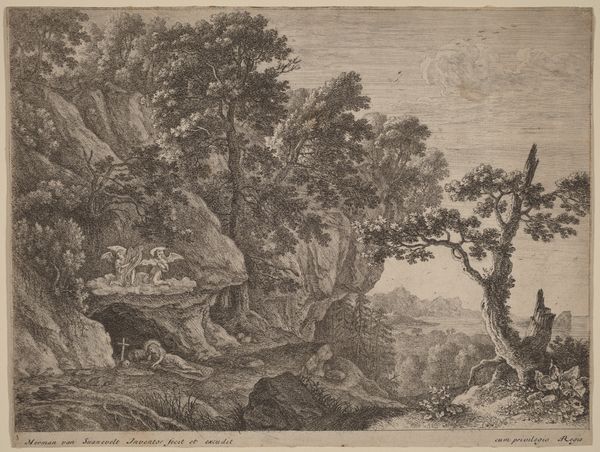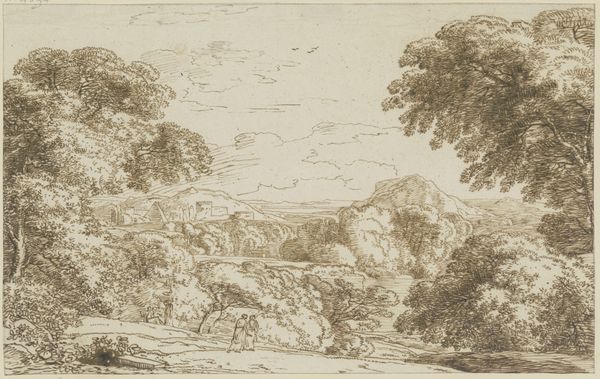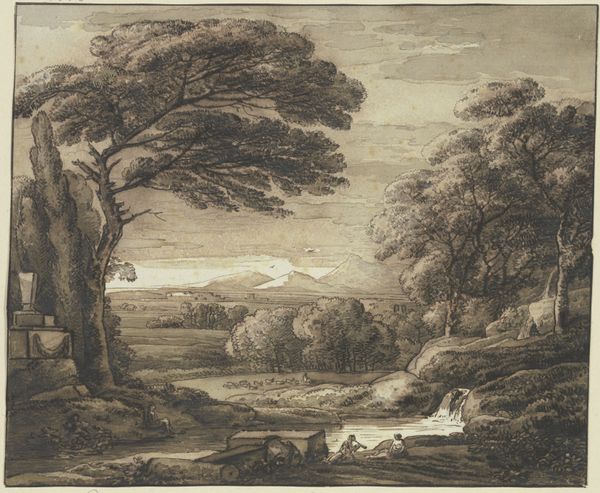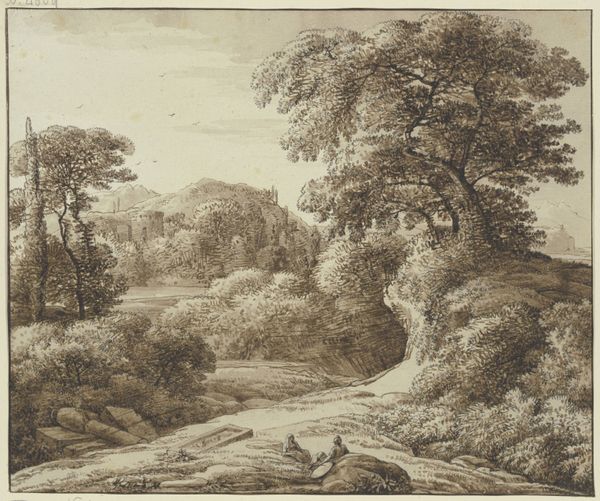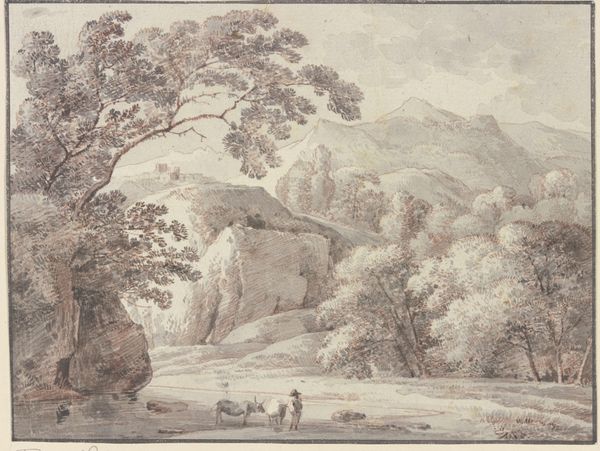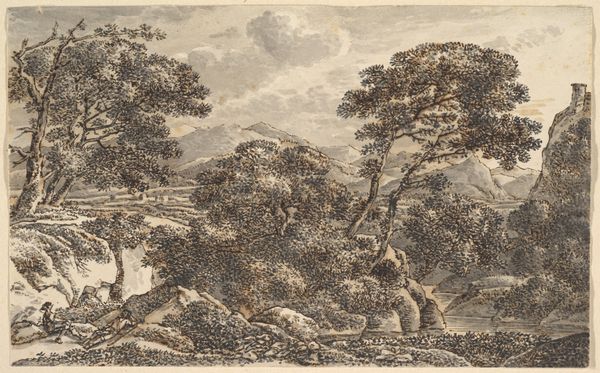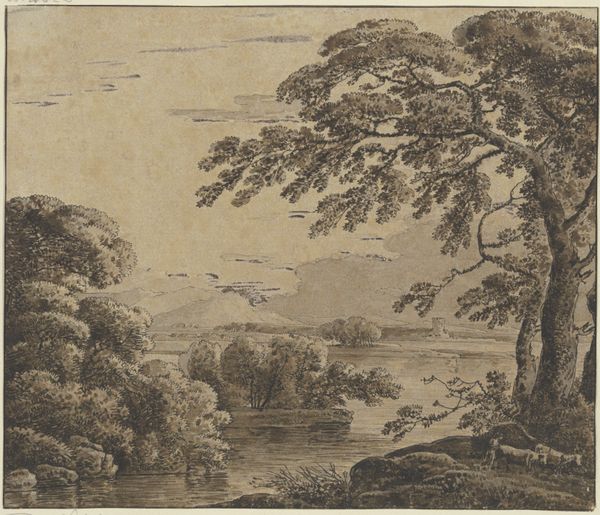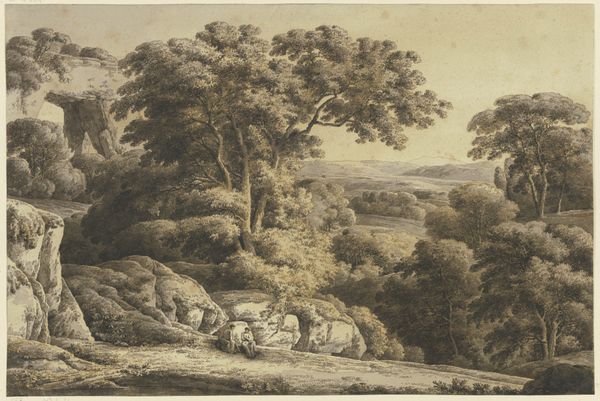
drawing, ink, architecture
#
drawing
#
landscape
#
charcoal drawing
#
ink
#
romanticism
#
15_18th-century
#
architecture
Copyright: Public Domain
Editor: This ink and charcoal drawing, titled "Classical River Landscape with Ruins," is by Franz Kobell. It feels dreamlike, like a half-remembered vision of a lost world. I'm curious about how to interpret all of these symbols, how do you see this work? Curator: What immediately strikes me is the strategic deployment of ruins versus the pastoral elements. They represent a fragmented, idealized past viewed through a lens of loss and contemplation. This river, seemingly peaceful, bisects two realms. What do you think the juxtaposition evokes? Editor: A sense of longing, maybe? The ruins are literally crumbling, and that contrasts so strongly with the lush trees in the foreground. It makes the past feel… unreachable, but still beautiful. Curator: Precisely. The iconography invites us to reflect on the cyclical nature of civilizations: birth, flourishing, decay, and potential rebirth. Kobell utilizes symbols to elicit feelings regarding our place within time. See the figures nestled within the foliage. How do you perceive them? Editor: They seem small, almost insignificant against the scale of the landscape and the ruins. Curator: A deliberate artistic choice, their positioning underscores the transient human condition. Do the statues hidden in the trees evoke anything for you? Are they meant to imply continuity between the Classical period and Kobell’s time? Editor: I see. Perhaps they’re meant to be reminders. History isn't truly gone; it lingers, partially obscured, in the present. Curator: An insightful observation. Kobell reminds us that understanding our present requires acknowledging the echoes of yesterday, both majestic and fallen. Thank you, it changed the way I think about it. Editor: I'll remember that, too. Thanks for opening my eyes.
Comments
No comments
Be the first to comment and join the conversation on the ultimate creative platform.
